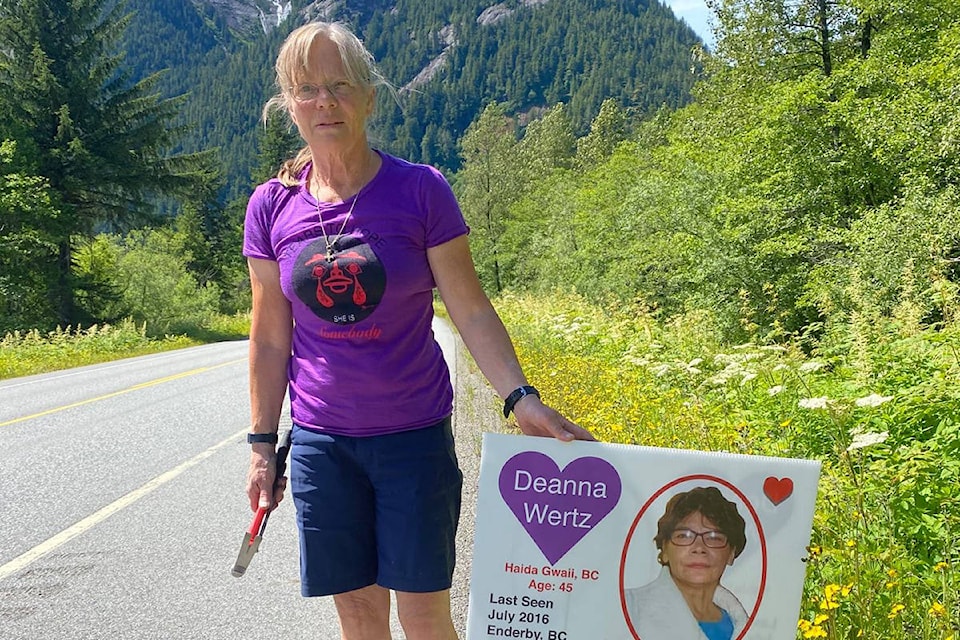Tears to Hope Society’s third annual relay run for Murdered & Missing Indigenous Women, Girls (MMWIG) and boys/men took place over the weekend of June 26-27, despite temperatures in most parts of northwest B.C. soaring above 35 C.
Runners from Kitimat, Prince Rupert, Smithers and Gingolx ran to Terrace along Hwy 16, Hwy 37 and Hwy113 and finished the relay at Ferry Island.
Nalaine Morin and her brother Peter Morin from Tahltan First Nation started off Tears to Hope’s 2021 relay run from Smithers on June 26.
The society also retained its virtual relay run which began last year due to COVID-19. The relay had over a 100 people who registered to run for the cause, including an Ontario-based youth organization and participants from the U.S. and New Zealand who ran virtually.
There were 659 participants in total this year, covering a 10 kilometre leg each. On the Prince Rupert route there were 15 legs, Smithers 20 legs, Nass Valley 17 legs and Kitimat seven legs.
In addition to the cause of MMIWG and men, this year the runners also ran for the 215 children whose remains were found at the site of the former residential school site in Kamloops along with the others whose grave sites are being discovered across Canada.
Prior to the run, organizers travelled across the routes and pinned markers every 10 kilometres alongside the Highway roads. The marker consisted of photos of people from the region who were murdered or went missing.
“When you see pictures of somebody it becomes more real,” said Birgitte Bartlett, who co-founded Tears to Hope with Lorna Brown whose niece Tamara Chipman went missing from Prince Rupert in 2005.
The first Tears to Hope relay run took place in 2019 with a vision to provide support for the families of people who have murdered or missing by running along Canada’s infamous Highway of Tears (Hwy 16).
Running is a good activity for both body and mind, reduced anxiety and encourages emotional healing too, said Bartlett.
Although the relay runs began three years ago, both Brown and Bartlett have conducted and participated in many walks across the northwest for MMIWG and boys/men. Bartlett said the idea of the relay run was conceived on one such walk to Smithers from Terrace to attend the National Inquiry Commission for MMWIG in 2017.
